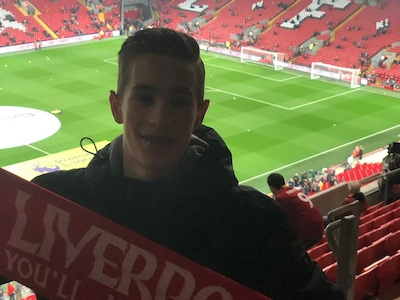Why do football players wear a bra?
Male professional footballers wearing a sports bra-like camisole under their shirt: we see it more and more often. At first, you would think it serves as chest and back support, but nothing could be further from the truth. In fact, the mini-vest is full of advanced measuring devices and serves as a GPS tracker. It keeps track of almost everything you can think of: from heart rate to distance and from top speed to strength.
Football-oriented GPS trackers
The biggest advantage of these "sports bras for footballers" is data collection and comparison. Not only for the individual wearing it, but also for teams. For example, as a player, you can use a heatmap to see exactly where you ran during the match, how many kilometres you covered, what your top speed was and how much strength you used. Based on this data, training and nutrition schedules of football players are optimised with the aim of becoming even better and even fitter.
All data is tracked in a corresponding app and computer software. Nowadays, clubs measure their players both during matches and training sessions. All physical effort is measured in order to push the body to its limits as possible. Recovery trainings are designed based on all the results.
Human movement scientist Peter Eppinga recently explained the procedure perfectly in the Volkskrant: “If a player accelerates 150 times per game, we know he needs to accelerate 150 times during training as well to get used to the match intensity. You can increase the training intensity gradually, so that a player can last longer during a match. However, the emphasis lies on gradually. If a player suddenly starts doing much more than his body is used to, there is a chance he will get injured. Preventing injuries is also a very important aim of the ‘bra.’”
Catapult One is a renown provider of these sport trackers and supplies their products to major clubs such as AFC Ajax and Atlético Madrid. According to the company, avest measures way more accurately than a sport watch, for example, and it’s way safer. If you want to purchase such a tracker, then you will have to spend around 180 euros.
Interesting data for football fans
The accuracy of the data is useful for clubs and football players, but it’s also interesting for fans. For instance, we now know who achieved the highest top speed at the World Cup in Qatar. The fastest player at the World Cup was Kamaldeen Sulemana, who reached a top speed of 35.7 kilometres per hour during a group stage match against Uruguay. By comparison, Kylian Mbappé ran a top speed of 35.3 kilometres per hour.
In terms of distance run, it is notable that central midfielders cover the most kilometres per match. The best endurance runners at the World Cup included Brozović, Skhiri and Kimmich. All of them covered more than 13 kilometres in a match.
GPS top in practice
Around 2018, professional clubs started experimenting with GPS vests. It proved successful and very useful in several ways. The media department of England's Crystal Palace made an interesting report about it. Want to fast-forward straight to the most interesting part of the video? Then you should start the video at 1.32.



